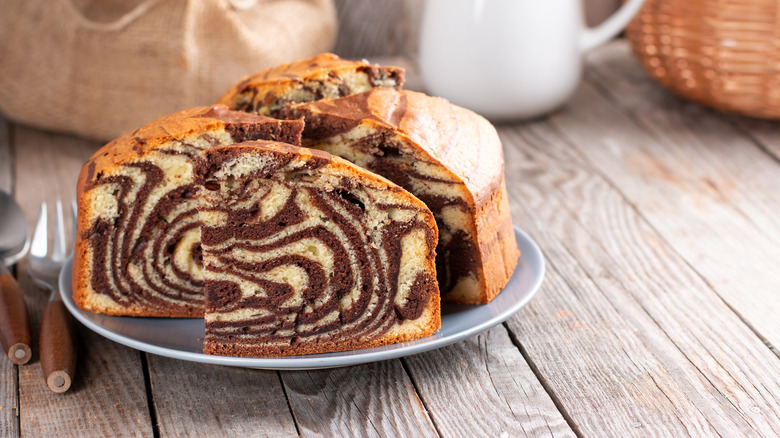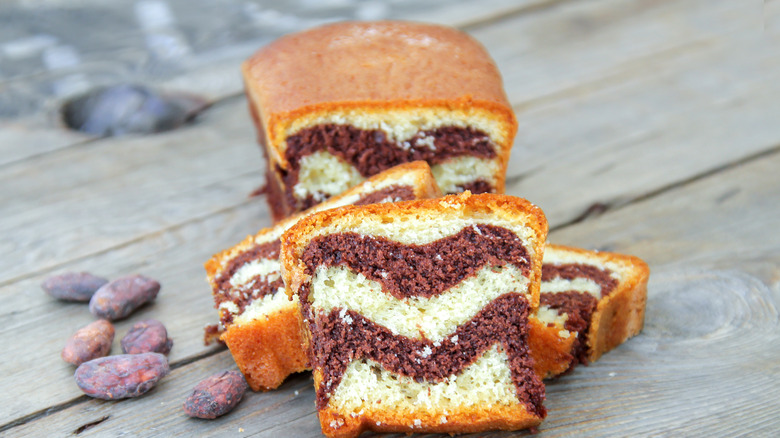Do You Have To Use Multiple Batters For Marble Cake?
Marble cake probably isn't the first thing that pops up in your mind when you think about desserts designed to impress. It doesn't make a proud and obvious spectacle of itself the way, say, floating islands do, with their carefully cultivated meringue floating amid meticulously prepared crème anglaise. It doesn't emerge from fire, beautifully transformed, like bananas foster, crepes Suzette, or any of the other myriad flambés that dazzle diners across the globe. But marble cake is so much more than meets the eye.
To understand, all you have to do is slice into one to reveal its elegant swirls, which not only look and taste distinct from one another, but are also rich with metaphors about relationships, teams, and even government, all of which benefit, like marble cake, from the unique contributions of their constituent parts. Moreover, those constituent parts may turn out to have far more in common than how they might appear. Indeed, while marble cake is technically constructed by swirling together two or more sharply contrasting batters, in most iterations of marble cake, the various batters all start from the same recipe, the same ingredients, and even the same mixing bowl. And that's how it's been since the very first marble cake recipe appeared in a recipe book, which Whats Cooking America asserts can be traced to 1871 and which very clearly did not require the making of two batters. Two bowls, yes. But multiple batters? Not so much.
Multiple bowls yes, but multiple batters? Nope!
The first American marble cake recipe, which appeared in "Mrs. Porters' New Southern Cookery Book," was rich and complex. Per Whats Cooking America, it called for a pound each of sugar, butter, and flour, 16 egg whites, half a citron, and cochineal, which is a flavorless red dye derived from insects, traditionally used to color red liqueurs like Aperol and Campari. But what it did not call for multiple batters.
Rather, after mixing the first four ingredients, the recipe called for transferring a third of the batter to another bowl and tinting it red (using the cochineal); the two different colored batters were then layered one over the other in the pan (first half of the un-tinted batter, then all of the tinted batter, and then the rest of the un-tinted). No mention was made of swirling, but perhaps that was implied. In any case, while this seminal American marble cake recipe did, in fact, call for an extra bowl, it did not require a second batter per se. Nor did the next iteration, which (finally!) involved adding chocolate to the second bowl.
This template remains the gold standard of marble cake baking today, according to Master Class, which notes that the second bowl need not be flavored/colored with chocolate; cinnamon or orange can do quite nicely. So too can any number of other infusions, as evidenced by these breathtaking marble cake specimens that look almost too beautiful to eat.

